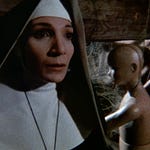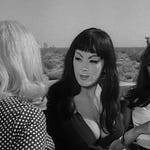Jean Rollin’s early work featured repeated imagery of renegade female pairings and doppelgängers. In those films, like Shiver of the Vampires and Requiem for a Vampire, the motif was employed as a surrealist technique for communicating fairytale wistfulness, imperiled innocence, and a sense of the uncanny.
But in his more mature work, Rollin explored a series of female relationships—including sexual, circumstantial, and sisterly variations—to represent some of his deepest themes.
As we can see in these three films, Rollin saw female intimacy as the privileged vehicle for the way we achieve death-like transcendence in other people, a transgressive form of connection that burns so hot that it erases the boundary between self and other, thus verging on the experience of death.
Timestamps
0:00 - introduction
0:52 - Fascination (1979)
6:58 - Zombie Lake (1981)
9:27 - The Escapees (1981)
16:43 - The Living Dead Girl (1982)
This is the penultimate chapter of our study on Jean Rollin. You can catch up on the entire series here. In the final chapter, we’ll examine the mournful final phase of Rollin’s career. His descent into self-referential pastiche and meta-nostalgia has something to say about the two cultural epochs his career straddled—modernism and postmodernism—and helps us tie a bow on an understanding of his work as a whole.










